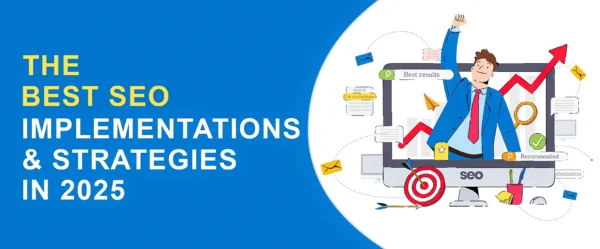Attracting the right audience for your website can be a compelling task that can actually get you a little overwhelmed. However, SEO and demand generation can make things come true in a powerful collaboration that leads to fruitful outcomes. SEO is all about getting your content in front of the right audience and getting them to read it. Demand generation is a marketing strategy that focuses on creating the desire for your product or service that you provide people with. The question remains: How do these two merge and become of great benefit when mixed together? The key answer is in how these two can help you boost your visibility and cause you to have leads that will get your website to the success rate that you wish for.
Let me walk you through a hypothetical situation to elaborate more on how things work with SEO and demand generation. If SEO drives users to your website, demand generation keeps them engaged. It simply guides them from being merely curious to becoming a loyal customer. Blending SEO tactics like targeting keywords with buyer intent with the efforts of demand generation will help you turn mere visibility into an actual demand. In this guide, we’ll explore how to combine these two efficient strategies to not simply get noticed but also create lasting interest that turns into revenue. Delve deeper with me and get to learn and understand SEO and demand generation.
The Role of SEO in Demand Generation
The role of SEO in demand generation is one that is vital enough. It helps businesses create an awareness campaign that attracts potential customers to their brand. But why is SEO important for this process? Simply put, SEO helps your brand pop in front of people who are actively searching for solutions that your brand actually offers. If your website ranks highly in search results, it becomes more visible to those who are already interested in what you offer. This visibility is key to generating awareness and, ultimately, demand.
I know you may ask, How do search engines contribute to impacting demand? When your site appears at the top of Google’s results, it not only gets more clicks but it also gains trust. That is because Google never increases the rank for any website unless it actually provides something that is valuable and provides something that is informative enough. It is all because people tend to trust what they see first due to how relevant it is. The higher your ranking, the more likely you’ll convert casual searchers into potential leads.
Are you still wondering how SEO can impact your demand generation efforts? Imagine ranking for a keyword that perfectly matches what your audience is looking for. Each click and visit turns into a great opportunity to help you engage, educate, and eventually convert that website visitor of yours into a paying customer. SEO was never just about clicks; as a matter of fact, it is all about digging up those tunnels that will flood you with potential increases in your audience rate and exposure.
Key Implementation Tactics for Your Knowledge
In order to merge demand generation with SEO, it is important that you find and focus on the right tactics. Feeling lost? I can help you with that. You can start with conducting thorough keyword research. Get to know what your potential customers are looking for. What are their desires? And what their search intents are? The thing is that your tactic shouldn’t be about finding high-volume keywords; it should be about identifying phrases that show buyer intents and help you understand them. For example, “best no-code platforms for small businesses” is more likely to lead to conversions than a general phrase search like “no-code platforms.”
How do you capture the attention that you need to channel towards your website for better visibility and exposure? The answer is simple. You can do that by creating high-quality content that is focused on intents and their types. Your content should cater to a variety of things for your users.
If your content checks off the following questions, then you’re good to go:
- Does your content address your audience’s needs?
- Does your content answer web-asked questions in your niche?
- Does your content guide visitors towards what they’re looking for?
Whether it’s blog posts, guides, or case studies, make sure every piece serves a purpose and offers a certain solution that will make your content of value. Finally, ask yourself whether your landing page is optimized for conversions. Even with great content, if your landing page isn’t built to convert, you’ll lose potential leads. Clear calls to action, fast load times, and user-friendly design are key to turning traffic into the results you wish for. Combining these tactics creates a smooth journey from discovery to decision-making, driving real demand for your product or service.
Integrating SEO with Other Demand Generation Strategies
How can you take SEO to the next level? By integrating it with other demand generation strategies like content marketing, social media, and email campaigns. When SEO and content marketing work together, the results are something that is so fruitful. That is because you’re not just optimizing for keywords; you’re actually creating valuable content that speaks directly to your audience’s needs. What good is ranking high if your content doesn’t engage? Combining these ensures that your SEO-optimized articles, blogs, and resources also generate genuine interest.
Then there’s social media. How does it fit in all of this? Social platforms can amplify your SEO content. It can help you reach a wider audience while driving more traffic back to your site. And let’s not forget email campaigns. Did you know that your email newsletters can boost SEO in a matter of minutes? The process of including links to new blog posts or landing pages will help you drive repeat traffic. This will lead to a better ranking rate for your website.
So, what I am trying to summarize for you here is:
- SEO + content marketing = valuable, targeted content that ranks and engages.
- SEO + social media = increased visibility and traffic.
- SEO + email = repeat traffic that boosts SEO rankings.
SEO and Demand Generation: The Process of Measuring Your Success
How do you know if your SEO and demand generation efforts are paying off? The key is tracking the right metrics that your website shows you. Organic traffic growth is often the first indicator of success. Are more people finding your website through search engines? A steady increase in organic traffic means your SEO strategies are driving visibility. But traffic alone isn’t enough. Let’s delve deeper into conversions and their importance. what about conversions? After all, attracting visitors is only half the battle. Measuring conversion rates and leads generated tells you how effective your content and landing pages are in turning visitors into customers. Are people signing up for your newsletter, downloading your eBooks, or making purchases? If not, it’s time to optimize those call-to-actions and user experiences.
Another crucial metric is your search engine ranking. Are you moving up for important keywords? Higher rankings can exponentially increase your visibility and organic traffic, giving your demand generation a real boost. These metrics—organic traffic, conversions, and search engine rankings—are the backbone of measuring success. Each tells you a different part of the story. Focusing on all three ensures you’re not just attracting attention but converting it into meaningful results for your business. After all, the ultimate goal isn’t just visibility—it’s action.
In Conclusion
As we look to the future, how will SEO and demand generation evolve? One key player is AI, revolutionizing how we optimize content and target potential customers. AI tools are already helping businesses predict consumer behavior and personalize content to boost engagement.
What about voice search? It’s quickly reshaping SEO, with more users asking questions verbally, meaning your strategy needs to adjust to more conversational keywords.
But how can you stay ahead? By continually adapting to emerging trends, you can align your SEO and demand generation efforts for long-term success. Ready to boost your visibility and demand? Check out linkexchange.ai to discover how it can help you supercharge your SEO and demand generation strategies today!









